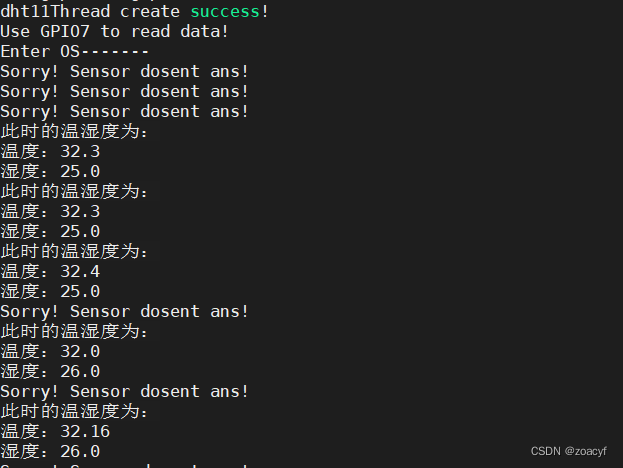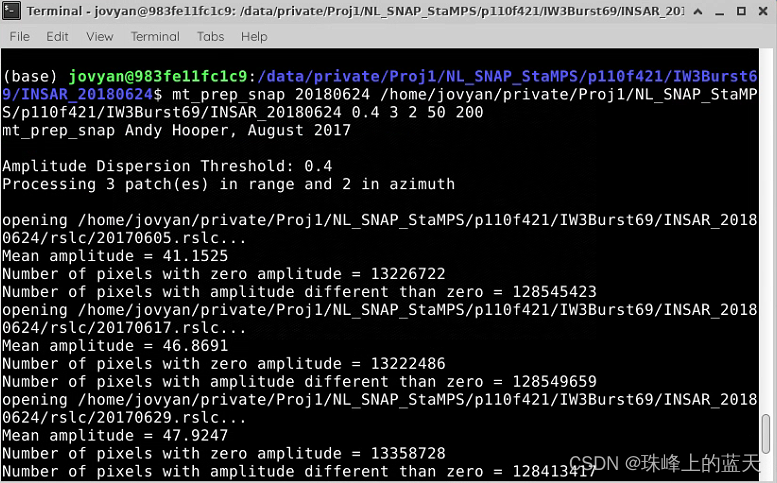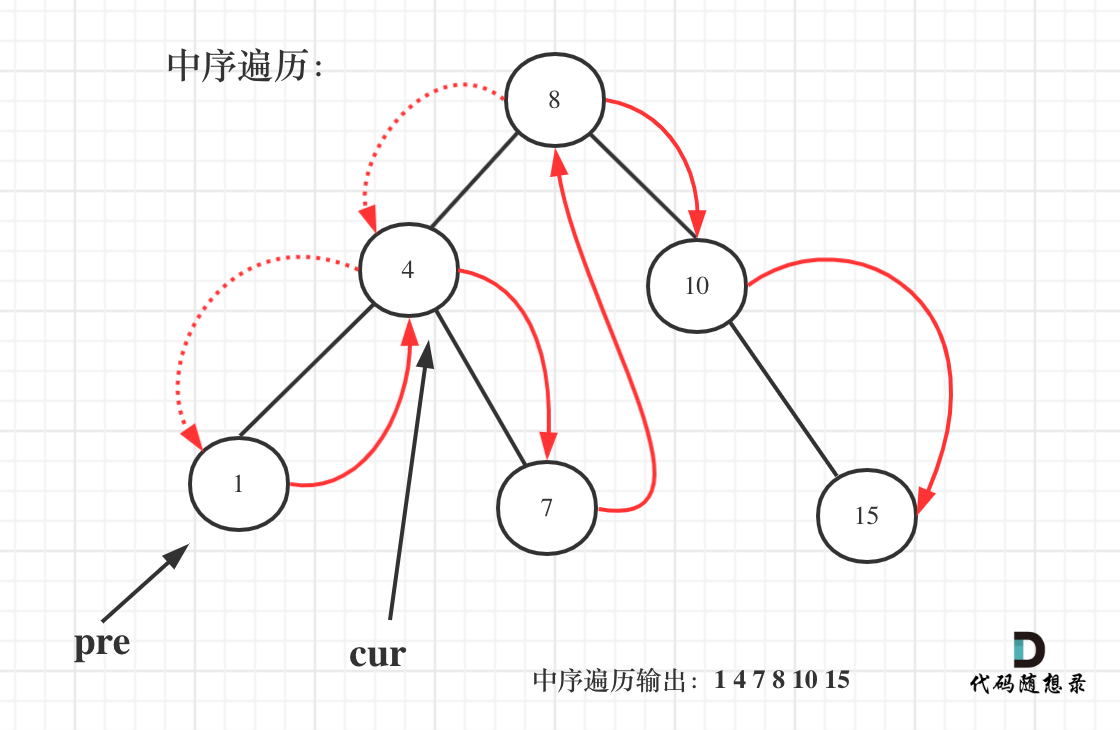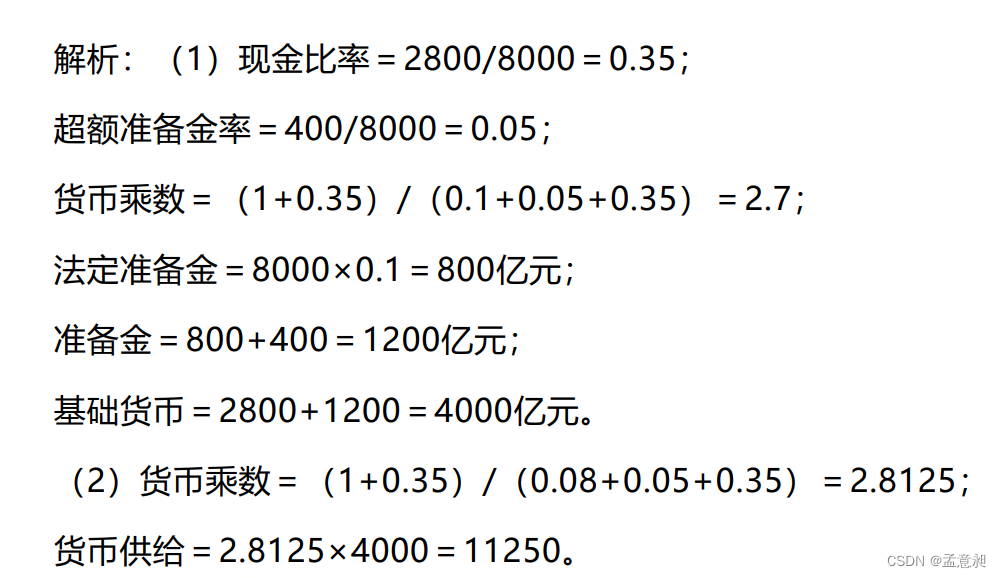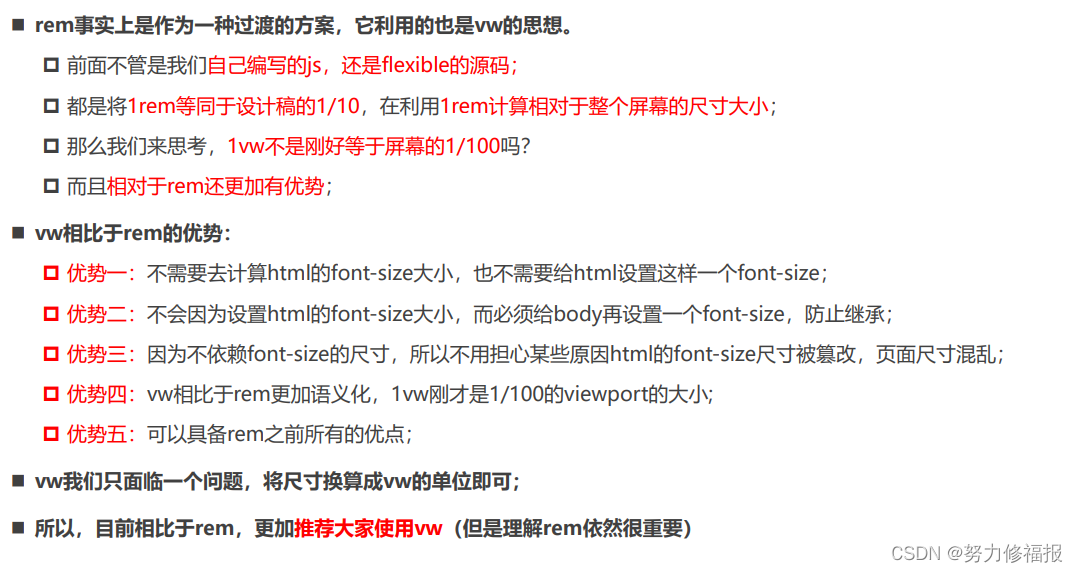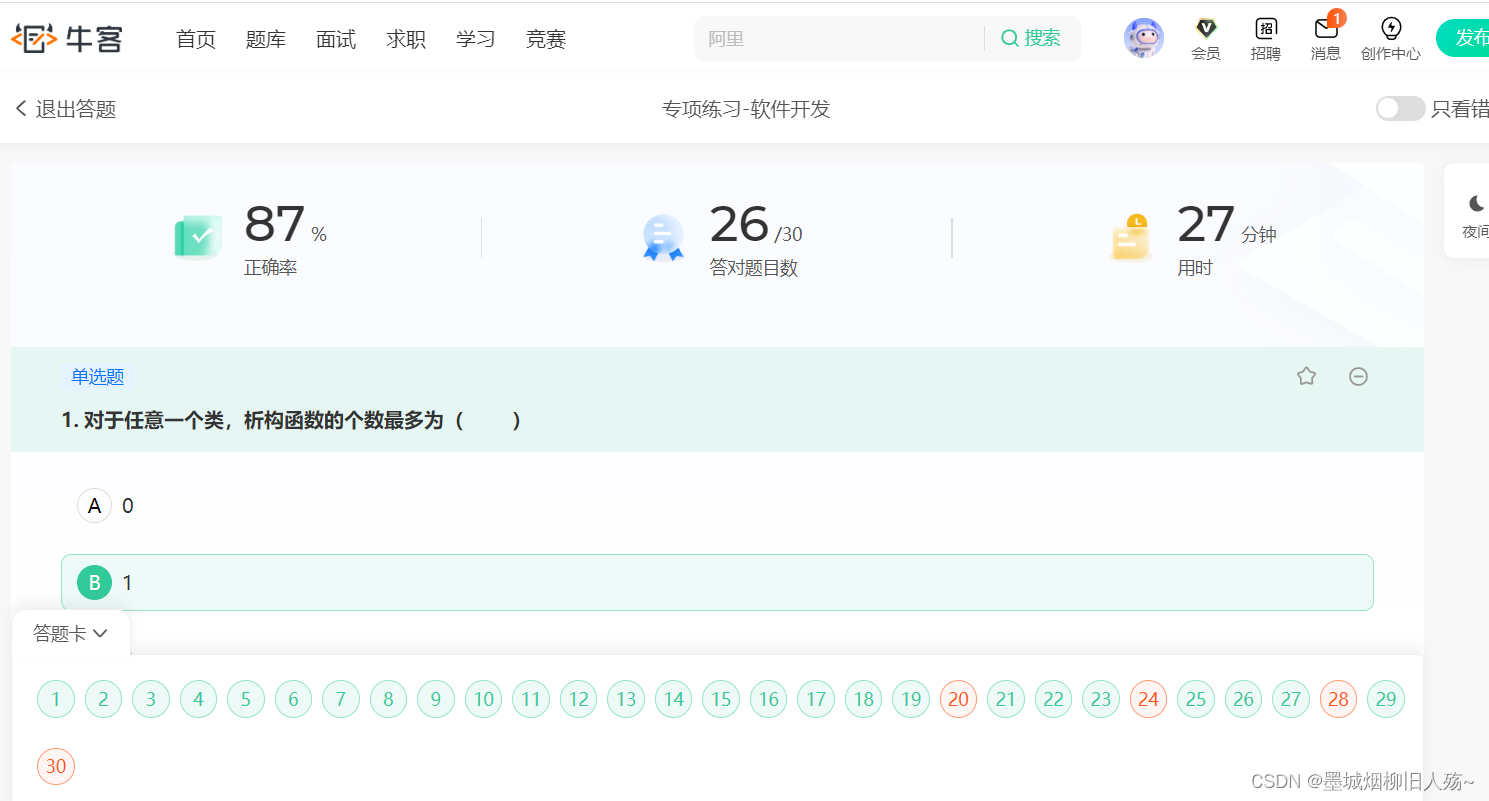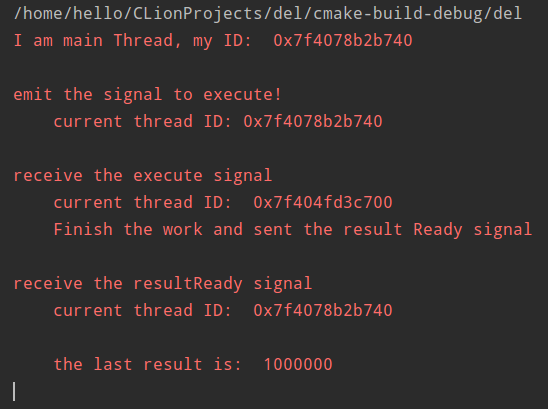1. 异步 & 事件循环
1. 代码输出结果
const promise = new Promise((resolve, reject) => {
console.log(1);
console.log(2);
});
promise.then(() => {
console.log(3);
});
console.log(4);输出结果如下:
1
2
4promise.then 是微任务,它会在所有的宏任务执行完之后才会执行,同时需要promise内部的状态发生变化,因为这里内部没有发生变化,一直处于pending状态,所以不输出3。
2. 代码输出结果
const promise1 = new Promise((resolve, reject) => {
console.log('promise1')
resolve('resolve1')
})
const promise2 = promise1.then(res => {
console.log(res)
})
console.log('1', promise1);
console.log('2', promise2);输出结果如下:
promise1
1 Promise{<resolved>: resolve1}
2 Promise{<pending>}
resolve1需要注意的是,直接打印 promise1,会打印出它的状态值和参数。
代码执行过程如下:
1. script是一个宏任务,按照顺序执行这些代码;
2. 首先进入Promise,执行该构造函数中的代码,打印promise1;
3. 碰到resolve函数, 将promise1的状态改变为resolved, 并将结果保存下来;
4. 碰到promise1.then这个微任务,将它放入微任务队列;
5. promise2是一个新的状态为pending的Promise;
6. 执行同步代码1, 同时打印出promise1的状态是resolved;
7. 执行同步代码2,同时打印出promise2的状态是pending;
8. 宏任务执行完毕,查找微任务队列,发现promise1.then这个微任务且状态为resolved,执行它;
3. 代码输出结果
const promise = new Promise((resolve, reject) => {
console.log(1);
setTimeout(() => {
console.log("timerStart");
resolve("success");
console.log("timerEnd");
}, 0);
console.log(2);
});
promise.then((res) => {
console.log(res);
});
console.log(4);
输出结果如下:
1
2
4
timerStart
timerEnd
success代码执行过程如下:
1. 首先遇到Promise构造函数,会先执行里面的内容,打印1;
2. 遇到定时器steTimeout,它是一个宏任务,放入宏任务队列;
3. 继续向下执行,打印出2;
4. 由于Promise的状态此时还是pending,所以promise.then先不执行;
5. 继续执行下面的同步任务,打印出4;
6. 此时微任务队列没有任务,继续执行下一轮宏任务,执行steTimeout;
7. 首先执行timerStart,然后遇到了resolve,将promise的状态改为resolved且保存结果并将之前的promise.then推入微任务队列,再执行timerEnd;
8. 执行完这个宏任务,就去执行微任务promise.then,打印出resolve的结果;
4. 代码输出结果
Promise.resolve().then(() => {
console.log('promise1');
const timer2 = setTimeout(() => {
console.log('timer2')
}, 0)
});
const timer1 = setTimeout(() => {
console.log('timer1')
Promise.resolve().then(() => {
console.log('promise2')
})
}, 0)
console.log('start');输出结果如下:
start
promise1
timer1
promise2
timer2代码执行过程如下:
1. 首先,Promise.resolve().then是一个微任务,加入微任务队列;
2. 执行timer1,它是一个宏任务,加入宏任务队列;
3. 继续执行下面的同步代码,打印出start;
4. 这样第一轮宏任务就执行完了,开始执行微任务Promise.resolve().then,打印出promise1;
5. 遇到timer2,它是一个宏任务,将其加入宏任务队列,此时宏任务队列有两个任务,分别是timer1、timer2;
6. 这样第一轮微任务就执行完了,开始执行第二轮宏任务,首先执行定时器timer1,打印timer1;
7. 遇到Promise.resolve().then,它是一个微任务,加入微任务队列;
8. 开始执行微任务队列中的任务,打印promise2;
9. 最后执行宏任务timer2定时器,打印出timer2;
5. 代码输出结果
const promise = new Promise((resolve, reject) => {
resolve('success1');
reject('error');
resolve('success2');
});
promise.then((res) => {
console.log('then:', res);
}).catch((err) => {
console.log('catch:', err);
})
输出结果如下:
then:success1这个题目考察的就是Promise的状态在发生变化之后,就不会再发生变化。开始状态由pending变为resolve,说明已经变为已完成状态,下面的两个状态的就不会再执行,同时下面的catch也不会捕获到错误。
6. 代码输出结果
Promise.resolve(1)
.then(2)
.then(Promise.resolve(3))
.then(console.log)输出结果如下:
1then 或 catch的参数应为函数,而传递非函数将导致值的结果被忽略,例如.then(2)或.then(Promise.resolve(3))
7. 代码输出结果
const promise1 = new Promise((resolve, reject) => {
setTimeout(() => {
resolve('success')
}, 1000)
})
const promise2 = promise1.then(() => {
throw new Error('error!!!')
})
console.log('promise1', promise1)
console.log('promise2', promise2)
setTimeout(() => {
console.log('promise1', promise1)
console.log('promise2', promise2)
}, 2000)输出结果如下:
promise1 Promise {<pending>}
promise2 Promise {<pending>}
Uncaught (in promise) Error: error!!!
promise1 Promise {<fulfilled>: "success"}
promise2 Promise {<rejected>: Error: error!!}8. 代码输出结果
Promise.resolve(1)
.then(res => {
console.log(res);
return 2;
})
.catch(err => {
return 3;
})
.then(res => {
console.log(res);
});
输出结果如下:
1
2Promise是可以链式调用的,由于每次调用 .then 或者 .catch 都会返回一个新的 promise,从而实现了链式调用, 它并不像一般任务的链式调用一样return this。
上面的输出结果之所以依次打印出1和2,是因为resolve(1)之后走的是第一个then方法,并没有进catch里,所以第二个then中的res得到的实际上是第一个then的返回值。并且return 2会被包装成resolve(2),被最后的then打印输出2。
9. 代码输出结果
Promise.resolve().then(() => {
return new Error('error!!!')
}).then(res => {
console.log("then: ", res)
}).catch(err => {
console.log("catch: ", err)
})
输出结果如下:
"then: " "Error: error!!!"返回任意一个非 promise 的值都会被包裹成 promise 对象,因此这里的return new Error('error!!!')也被包裹成了return Promise.resolve(new Error('error!!!')),因此它会被then捕获而不是catch。
10. 代码输出结果
const promise = Promise.resolve().then(() => {
return promise;
})
promise.catch(console.err)输出结果如下:
Uncaught (in promise) TypeError: Chaining cycle detected for promise #<Promise>这里其实是一个坑,.then 或 .catch 返回的值不能是 promise 本身,否则会造成死循环。
11. 代码输出结果
Promise.resolve(1)
.then(2)
.then(Promise.resolve(3))
.then(console.log)输出结果如下:
1看到这个题目,好多的then,实际上只需要记住一个原则:.then 或.catch 的参数期望是函数,传入非函数则会发生值透传。
第一个then和第二个then中传入的都不是函数,一个是数字,一个是对象,因此发生了透传,将resolve(1) 的值直接传到最后一个then里,直接打印出1。
12. 代码输出结果
Promise.reject('err!!!')
.then((res) => {
console.log('success', res)
}, (err) => {
console.log('error', err)
}).catch(err => {
console.log('catch', err)
})
输出结果如下:
error err!!!我们知道,.then函数中的两个参数:
1. 第一个参数是用来处理Promise成功的函数;
2. 第二个则是处理失败的函数;
也就是说Promise.resolve('1')的值会进入成功的函数,Promise.reject('2')的值会进入失败的函数。
在这道题中,错误直接被then的第二个参数捕获了,所以就不会被catch捕获了,输出结果为:error err!!!
但是,如果是像下面这样:
Promise.resolve()
.then(function success(res) {
throw new Error('error!!!')
}, function fail1(err) {
console.log('fail1', err)
}).catch(function fail2(err) {
console.log('fail2', err)
})在then的第一参数中抛出了错误,那么他就不会被第二个参数捕获了,而是被后面的catch捕获到。
13. 代码输出结果
Promise.resolve('1')
.then(res => {
console.log(res)
})
.finally(() => {
console.log('finally')
})
Promise.resolve('2')
.finally(() => {
console.log('finally2')
return '我是finally2返回的值'
})
.then(res => {
console.log('finally2后面的then函数', res)
})
输出结果如下:
1
finally2
finally
finally2后面的then函数 2finally()一般用的很少,只要记住以下几点就可以了:
1. finally()方法不管Promise对象最后的状态如何都会执行;
2. finally()方法的回调函数不接受任何的参数,也就是说你在 finally()函数中是无法知道Promise最终的状态是resolved还是rejected的;
3. 它最终返回的默认会是一个上一次的Promise对象值,不过如果抛出的是一个异常则返回异常的Promise对象;
4. finally本质上是then方法的特例;
finally()的错误捕获:
Promise.resolve('1')
.finally(() => {
console.log('finally1')
throw new Error('我是finally中抛出的异常')
})
.then(res => {
console.log('finally后面的then函数', res)
})
.catch(err => {
console.log('捕获错误', err)
})输出结果为:
'finally1'
'捕获错误' Error: 我是finally中抛出的异常14. 代码输出结果
function runAsync (x) {
const p = new Promise(
r => setTimeout(() => r(
x, console.log(x)
), 1000)
);
return p
};
Promise.all([runAsync(1), runAsync(2), runAsync(3)])
.then(res => console.log(res))输出结果如下:
1
2
3
[1, 2, 3]首先,定义了一个Promise,来异步执行函数runAsync,该函数传入一个值x,然后间隔一秒后打印出这个x。
之后再使用Promise.all来执行这个函数,执行的时候,看到一秒之后输出了1,2,3,同时输出了数组[1, 2, 3],三个函数是同步执行的,并且在一个回调函数中返回了所有的结果。并且结果和函数的执行顺序是一致的。
15. 代码输出结果
function runAsync (x) {
const p = new Promise(r => setTimeout(() => r(x, console.log(x)), 1000))
return p
}
function runReject (x) {
const p = new Promise((res, rej) => setTimeout(() => rej(`Error: ${x}`, console.log(x)), 1000 * x))
return p
}
Promise.all([runAsync(1), runReject(4), runAsync(3), runReject(2)])
.then(res => console.log(res))
.catch(err => console.log(err))
输出结果如下:
// 1s后输出
1
3
// 2s后输出
2
Error: 2
// 4s后输出
4可以看到,catch捕获到了第一个错误,在这道题目中最先的错误就是runReject(2)的结果。如果一组异步操作中有一个异常都不会进入then()的第一个回调函数参数中,会被then()的第二个回调函数捕获。
16. 代码输出结果
function runAsync (x) {
const p = new Promise(r => setTimeout(() => r(x, console.log(x)), 1000))
return p
}
Promise.race([runAsync(1), runAsync(2), runAsync(3)])
.then(res => console.log('result: ', res))
.catch(err => console.log(err))输出结果如下:
1
'result: ' 1
2
3then只会捕获第一个成功的方法,其他的函数虽然还会继续执行,但是不是被then捕获了。
17. 代码输出结果
function runAsync(x) {
const p = new Promise(r =>
setTimeout(() => r(x, console.log(x)), 1000)
);
return p;
}
function runReject(x) {
const p = new Promise((res, rej) =>
setTimeout(() => rej(`Error: ${x}`, console.log(x)), 1000 * x)
);
return p;
}
Promise.race([runReject(0), runAsync(1), runAsync(2), runAsync(3)])
.then(res => console.log("result: ", res))
.catch(err => console.log(err));输出结果如下:
0
Error: 0
1
2
3可以看到在catch捕获到第一个错误之后,后面的代码还不执行,不过不会再被捕获了。
注意:all和race传入的数组中如果有会抛出异常的异步任务,那么只有最先抛出的错误会被捕获,并且是被then的第二个参数或者后面的catch捕获;但并不会影响数组中其它的异步任务的执行。
18. 代码输出结果
async function async1() {
console.log("async1 start");
await async2();
console.log("async1 end");
}
async function async2() {
console.log("async2");
}
async1();
console.log('start')输出结果如下:
async1 start
async2
start
async1 end代码的执行过程如下:
1. 首先执行函数中的同步代码async1 start,之后遇到了await,它会阻塞async1后面代码的执行,因此会先去执行async2中的同步代码async2,然后跳出async1;
2. 跳出async1函数后,执行同步代码start;
3. 在一轮宏任务全部执行完之后,再来执行await后面的内容 async1 end;
这里可以理解为await后面的语句相当于放到了new Promise中,下一行及之后的语句相当于放在Promise.then中。
19. 代码输出结果
async function async1() {
console.log("async1 start");
await async2();
console.log("async1 end");
setTimeout(() => {
console.log('timer1')
}, 0)
}
async function async2() {
setTimeout(() => {
console.log('timer2')
}, 0)
console.log("async2");
}
async1();
setTimeout(() => {
console.log('timer3')
}, 0)
console.log("start")输出结果如下:
async1 start
async2
start
async1 end
timer2
timer3
timer1代码的执行过程如下:
1. 首先进入async1,打印出 async1 start;
2. 之后遇到 async2,进入async2,遇到定时器 timer2,加入宏任务队列,之后打印 async2;
3. 由于 async2 阻塞了后面代码的执行,所以执行后面的定时器 timer3,将其加入宏任务队列,之后打印start;
4. 然后执行 async2 后面的代码,打印出 async1 end,遇到定时器 timer1,将其加入宏任务队列;
5. 最后,宏任务队列有三个任务,先后顺序为 timer2,timer3,timer1,没有微任务,所以直接所有的宏任务按照先进先出的原则执行;
20. 代码输出结果
async function async1() {
console.log('async1 start');
await new Promise(resolve => {
console.log('promise1')
})
console.log('async1 success');
return 'async1 end'
}
console.log('srcipt start')
async1().then(res => console.log(res))
console.log('srcipt end')
输出结果如下:
script start
async1 start
promise1
script end这里需要注意的是在async1中await后面的Promise是没有返回值的,也就是它的状态始终是pending状态,所以在await之后的内容是不会执行的,包括async1后面的 .then。
21. 代码输出结果
async function async1() {
console.log('async1 start');
await new Promise(resolve => {
console.log('promise1')
resolve('promise1 resolve')
}).then(res => console.log(res))
console.log('async1 success');
return 'async1 end'
}
console.log('srcipt start')
async1().then(res => console.log(res))
console.log('srcipt end')这里是对上面一题进行了改造,加上了resolve。
输出结果如下:
script start
async1 start
promise1
script end
promise1 resolve
async1 success
async1 end22. 代码输出结果
async function async1() {
console.log("async1 start");
await async2();
console.log("async1 end");
}
async function async2() {
console.log("async2");
}
console.log("script start");
setTimeout(function () {
console.log("setTimeout");
}, 0);
async1();
new Promise(resolve => {
console.log("promise1");
resolve();
}).then(function () {
console.log("promise2");
});
console.log('script end')输出结果如下:
script start
async1 start
async2
promise1
script end
async1 end
promise2
setTimeout代码执行过程如下:
1. 开头定义了async1和async2两个函数,但是并未执行,执行script中的代码,所以打印出script start;
2. 遇到定时器Settimeout,它是一个宏任务,将其加入到宏任务队列;
3. 之后执行函数async1,首先打印出async1 start;
4. 遇到await,执行async2,打印出async2,并阻断后面代码的执行,将后面的代码加入到微任务队列;
5. 然后跳出async1和async2,遇到Promise,打印出promise1;
6. 遇到resolve,将其加入到微任务队列,然后执行后面的script代码,打印出script end;
7. 之后就该执行微任务队列了,首先打印出async1 end,然后打印出promise2;
8. 执行完微任务队列,就开始执行宏任务队列中的定时器,打印出setTimeout;
23. 代码输出结果
async function async1 () {
await async2();
console.log('async1');
return 'async1 success'
}
async function async2 () {
return new Promise((resolve, reject) => {
console.log('async2')
reject('error')
})
}
async1().then(res => console.log(res))输出结果如下:
async2
Uncaught (in promise) error可以看到,如果async函数中抛出了错误,就会终止错误结果,不会继续向下执行。
如果想要让错误不足之处后面的代码执行,可以使用catch来捕获:
async function async1 () {
await Promise.reject('error!!!').catch(e => console.log(e))
console.log('async1');
return Promise.resolve('async1 success')
}
async1().then(res => console.log(res))
console.log('script start')这样的输出结果就是:
script start
error!!!
async1
async1 success24. 代码输出结果
const first = () => (new Promise((resolve, reject) => {
console.log(3);
let p = new Promise((resolve, reject) => {
console.log(7);
setTimeout(() => {
console.log(5);
resolve(6);
console.log(p)
}, 0)
resolve(1);
});
resolve(2);
p.then((arg) => {
console.log(arg);
});
}));
first().then((arg) => {
console.log(arg);
});
console.log(4);输出结果如下:
3
7
4
1
2
5
Promise{<resolved>: 1}代码的执行过程如下:
1. 首先会进入Promise,打印出3,之后进入下面的Promise,打印出7;
2. 遇到了定时器,将其加入宏任务队列;
3. 执行Promise p中的resolve,状态变为resolved,返回值为1;
4. 执行Promise first中的resolve,状态变为resolved,返回值为2;
5. 遇到p.then,将其加入微任务队列,遇到first().then,将其加入任务队列;
6. 执行外面的代码,打印出4;
7. 这样第一轮宏任务就执行完了,开始执行微任务队列中的任务,先后打印出1和2;
8. 这样微任务就执行完了,开始执行下一轮宏任务,宏任务队列中有一个定时器,执行它,打印出5,由于执行已经变为resolved状态,所以resolve(6)不会再执行;
9. 最后console.log(p)打印出Promise{<resolved>: 1};
25. 代码输出结果
const async1 = async () => {
console.log('async1');
setTimeout(() => {
console.log('timer1')
}, 2000)
await new Promise(resolve => {
console.log('promise1')
})
console.log('async1 end')
return 'async1 success'
}
console.log('script start');
async1().then(res => console.log(res));
console.log('script end');
Promise.resolve(1)
.then(2)
.then(Promise.resolve(3))
.catch(4)
.then(res => console.log(res))
setTimeout(() => {
console.log('timer2')
}, 1000)输出结果如下:
script start
async1
promise1
script end
1
timer2
timer1代码的执行过程如下:
1. 首先执行同步带吗,打印出script start;
2. 遇到定时器timer1将其加入宏任务队列;
3. 之后是执行Promise,打印出promise1,由于Promise没有返回值,所以后面的代码不会执行;
4. 然后执行同步代码,打印出script end;
5. 继续执行下面的Promise,.then和.catch期望参数是一个函数,这里传入的是一个数字,因此就会发生值渗透,将resolve(1)的值传到最后一个then,直接打印出1;
6. 遇到第二个定时器,将其加入到微任务队列,执行微任务队列,按顺序依次执行两个定时器,但是由于定时器时间的原因,会在两秒后先打印出timer2,在四秒后打印出timer1;
26. 代码输出结果
const p1 = new Promise((resolve) => {
setTimeout(() => {
resolve('resolve3');
console.log('timer1')
}, 0)
resolve('resovle1');
resolve('resolve2');
}).then(res => {
console.log(res) // resolve1
setTimeout(() => {
console.log(p1)
}, 1000)
}).finally(res => {
console.log('finally', res)
})执行结果为如下:
resolve1
finally undefined
timer1
Promise{<resolved>: undefined}需要注意的是最后一个定时器打印出的p1其实是.finally的返回值,我们知道.finally的返回值如果在没有抛出错误的情况下默认会是上一个Promise的返回值,而这道题中.finally上一个Promise是.then(),但是这个.then()并没有返回值,所以p1打印出来的Promise的值会是undefined,如果在定时器的下面加上一个return 1,则值就会变成1。
27. 代码输出结果
console.log('1');
setTimeout(function () {
console.log('2');
process.nextTick(function () {
console.log('3');
})
new Promise(function (resolve) {
console.log('4');
resolve();
}).then(function () {
console.log('5')
})
})
process.nextTick(function () {
console.log('6');
})
new Promise(function (resolve) {
console.log('7');
resolve();
}).then(function () {
console.log('8')
})
setTimeout(function () {
console.log('9');
process.nextTick(function () {
console.log('10');
})
new Promise(function (resolve) {
console.log('11');
resolve();
}).then(function () {
console.log('12')
})
})输出结果如下:
1
7
6
8
2
4
3
5
9
11
10
12第一轮事件循环流程分析如下:
1. 整体script作为第一个宏任务进入主线程,遇到console.log,输出1;
2. 遇到setTimeout,其回调函数被分发到宏任务Event Queue中,暂且记为setTimeout1;
3. 遇到process.nextTick(),其回调函数被分发到微任务Event Queue中,记为process1;
4. 遇到Promise,new Promise直接执行,输出7,then被分发到微任务Event Queue中,记为then1;
5. 又遇到了setTimeout,其回调函数被分发到宏任务Event Queue中,记为setTimeout2;

上表是第一轮事件循环宏任务结束时各Event Queue的情况,此时已经输出了1和7,发现了process1和then1两个微任务:
1. 执行process1,输出6;
2. 执行then1,输出8;
第一轮事件循环正式结束,这一轮的结果是输出1,7,6,8。
第二轮时间循环从 setTimeout1 宏任务开始:
1. 首先输出2。接下来遇到了process.nextTick(),同样将其分发到微任务Event Queue中,记为process2;
2. new Promise立即执行输出4,then也分发到微任务Event Queue中,记为then2;

第二轮事件循环宏任务结束,发现有 process2 和 then2 两个微任务可以执行:
1. 输出3;
2. 输出5;
第二轮事件循环结束,第二轮输出2,4,3,5。
第三轮事件循环开始,此时只剩setTimeout2了,执行如下:
1. 直接输出9;
2. 将process.nextTick()分发到微任务Event Queue中,记为process3;
3. 直接执行new Promise,输出11;
4. 将then分发到微任务Event Queue中,记为then3;

第三轮事件循环宏任务执行结束,执行两个微任务 process3 和 then3:
1. 输出10;
2. 输出12;
第三轮事件循环结束,第三轮输出9,11,10,12。
整段代码,共进行了三次事件循环,完整的输出为1,7,6,8,2,4,3,5,9,11,10,12。
28. 代码输出结果
console.log(1)
setTimeout(() => {
console.log(2)
})
new Promise(resolve => {
console.log(3)
resolve(4)
}).then(d => console.log(d))
setTimeout(() => {
console.log(5)
new Promise(resolve => {
resolve(6)
}).then(d => console.log(d))
})
setTimeout(() => {
console.log(7)
})
console.log(8)输出结果如下:
1
3
8
4
2
5
6
7代码执行过程如下:
1. 首先执行script代码,打印出1;
2. 遇到第一个定时器,加入到宏任务队列;
3. 遇到Promise,执行代码,打印出3,遇到resolve,将其加入到微任务队列;
4. 遇到第二个定时器,加入到宏任务队列;
5. 遇到第三个定时器,加入到宏任务队列;
6. 继续执行script代码,打印出8,第一轮执行结束;
7. 执行微任务队列,打印出第一个Promise的resolve结果:4;
8. 开始执行宏任务队列,执行第一个定时器,打印出2;
9. 此时没有微任务,继续执行宏任务中的第二个定时器,首先打印出5,遇到Promise,首选打印出6,遇到resolve,将其加入到微任务队列;
10. 执行微任务队列,打印出6;
11. 执行宏任务队列中的最后一个定时器,打印出7;
29. 代码输出结果
console.log(1);
setTimeout(() => {
console.log(2);
Promise.resolve().then(() => {
console.log(3)
});
});
new Promise((resolve, reject) => {
console.log(4)
resolve(5)
}).then((data) => {
console.log(data);
})
setTimeout(() => {
console.log(6);
})
console.log(7);代码输出结果如下:
1
4
7
5
2
3
6代码执行过程如下:
1. 首先执行scrip代码,打印出1;
2. 遇到第一个定时器setTimeout,将其加入到宏任务队列;
3. 遇到Promise,执行里面的同步代码,打印出4,遇到resolve,将其加入到微任务队列;
4. 遇到第二个定时器setTimeout,将其加入到红任务队列;
5. 执行script代码,打印出7,至此第一轮执行完成;
6. 指定微任务队列中的代码,打印出resolve的结果:5;
7. 执行宏任务中的第一个定时器setTimeout,首先打印出2,然后遇到 Promise.resolve().then(),将其加入到微任务队列;
8. 执行完这个宏任务,就开始执行微任务队列,打印出3;
9. 继续执行宏任务队列中的第二个定时器,打印出6;
30. 代码输出结果
Promise.resolve().then(() => {
console.log('1');
throw 'Error';
}).then(() => {
console.log('2');
}).catch(() => {
console.log('3');
throw 'Error';
}).then(() => {
console.log('4');
}).catch(() => {
console.log('5');
}).then(() => {
console.log('6');
});执行结果如下:
1
3
5
6在这道题目中,我们需要知道,无论是thne还是catch中,只要throw 抛出了错误,就会被catch捕获,如果没有throw出错误,就被继续执行后面的then。
31. 代码输出结果
setTimeout(function () {
console.log(1);
}, 100);
new Promise(function (resolve) {
console.log(2);
resolve();
console.log(3);
}).then(function () {
console.log(4);
new Promise((resove, reject) => {
console.log(5);
setTimeout(() => {
console.log(6);
}, 10);
})
});
console.log(7);
console.log(8);输出结果为:
2
3
7
8
4
5
6
1代码执行过程如下:
1. 首先遇到定时器,将其加入到宏任务队列;
2. 遇到Promise,首先执行里面的同步代码,打印出2,遇到resolve,将其加入到微任务队列,执行后面同步代码,打印出3;
3. 继续执行script中的代码,打印出7和8,至此第一轮代码执行完成;
4. 执行微任务队列中的代码,首先打印出4,如遇到Promise,执行其中的同步代码,打印出5,遇到定时器,将其加入到宏任务队列中,此时宏任务队列中有两个定时器;
5. 执行宏任务队列中的代码,这里我们需要注意是的第一个定时器的时间为100ms,第二个定时器的时间为10ms,所以先执行第二个定时器,打印出6;
6. 此时微任务队列为空,继续执行宏任务队列,打印出1;
做完这道题目,我们就需要格外注意,每个定时器的时间,并不是所有定时器的时间都为0哦。
2. This 指向问题
1. 代码输出结果
function foo() {
console.log(this.a);
}
function doFoo() {
foo();
}
var obj = {
a: 1,
doFoo: doFoo
};
var a = 2;
obj.doFoo()输出结果:2
在Javascript中,this指向函数执行时的当前对象。在执行foo的时候,执行环境就是doFoo函数,执行环境为全局。所以,foo中的this是指向window的,所以会打印出2。
2. 代码输出结果
var a = 10
var obj = {
a: 20,
say: () => {
console.log(this.a)
}
}
obj.say()
var anotherObj = { a: 30 }
obj.say.apply(anotherObj) 输出结果:10 10
我们知道,箭头函数时不绑定this的,它的this来自原其父级所处的上下文,所以首先会打印全局中的 a 的值10。后面虽然让say方法指向了另外一个对象,但是仍不能改变箭头函数的特性,它的this仍然是指向全局的,所以依旧会输出10。
但是,如果是普通函数,那么就会有完全不一样的结果:
var a = 10
var obj = {
a: 20,
say() {
console.log(this.a)
}
}
obj.say()
var anotherObj = { a: 30 }
obj.say.apply(anotherObj)输出结果:20 30
这时,say方法中的this就会指向他所在的对象,输出其中的a的值。
3. 代码输出结果
function a() {
console.log(this);
}
a.call(null);打印结果:window对象
根据ECMAScript262规范规定:如果第一个参数传入的对象调用者是null或者undefined,call方法将把全局对象(浏览器上是window对象)作为this的值。所以,不管传入null 还是 undefined,其this都是全局对象window。所以,在浏览器上答案是输出 window 对象。
要注意的是,在严格模式中,null 就是 null,undefined 就是 undefined。
'use strict';
function a() {
console.log(this);
}
a.call(null); // null
a.call(undefined); // undefined4. 代码输出结果
var obj = {
name : 'zoe',
fun : function(){
console.log(this.name);
}
}
obj.fun() // zoe
new obj.fun() // undefined使用new构造函数时,其this指向的是全局环境window。
5. 代码输出结果
var obj = {
say: function () {
var f1 = () => {
console.log("1111", this);
}
f1();
},
pro: {
getPro: () => {
console.log(this);
}
}
}
var o = obj.say;
o();
obj.say();
obj.pro.getPro();输出结果:
1111 window对象
1111 obj对象
window对象解析:
1. o(),o是在全局执行的,而f1是箭头函数,它是没有绑定this的,它的this指向其父级的this,其父级say方法的this指向的是全局作用域,所以会打印出window;
2. obj.say(),谁调用say,say 的this就指向谁,所以此时this指向的是obj对象;
3. obj.pro.getPro(),我们知道,箭头函数是不绑定this的,getPro处于pro中,而对象不构成单独的作用域,所以箭头的函数的this就指向了全局作用域window;
6. 代码输出结果
var myObject = {
foo: "bar",
func: function() {
var self = this;
console.log(this.foo);
console.log(self.foo);
(function() {
console.log(this.foo);
console.log(self.foo);
}());
}
};
myObject.func();输出结果:
bar
bar
undefined
bar解析:
1. 首先func是由myObject调用的,this指向myObject。又因为var self = this;所以self指向myObject;
2. 这个立即执行匿名函数表达式是由window调用的,this指向window 。立即执行匿名函数的作用域处于myObject.func的作用域中,在这个作用域找不到self变量,沿着作用域链向上查找self变量,找到了指向 myObject对象的self;
7. 代码输出问题
window.number = 2;
var obj = {
number: 3,
db1: (function () {
this.number *= 4;
return function () {
this.number *= 5;
}
})()
};
var db1 = obj.db1;
db1();
obj.db1();
console.log(obj.number); // 15
console.log(window.number); // 40这道题目看清起来有点乱,但是实际上是考察this指向的:
1. 执行db1()时,this指向全局作用域,所以window.number * 4 = 8,然后执行匿名函数, 所以window.number * 5 = 40;
2. 执行obj.db1()时,this指向obj对象,执行匿名函数,所以obj.numer * 5 = 15;
8. 代码输出结果
var length = 10;
function fn() {
console.log(this.length);
}
var obj = {
length: 5,
method: function(fn) {
fn();
arguments[0]();
}
};
obj.method(fn, 1);输出结果: 10 2
解析:
1. 第一次执行fn(),this指向window对象,输出10;
2. 第二次执行arguments[0](),相当于arguments调用方法,this指向arguments,而这里传了两个参数,故输出arguments长度为2;
9. 代码输出结果
var a = 1;
function printA() {
console.log(this.a);
}
var obj = {
a: 2,
foo: printA,
bar: function () {
printA();
}
}
obj.foo(); // 2
obj.bar(); // 1
var foo = obj.foo;
foo(); // 1
解析:
1. obj.foo(),foo 的this指向obj对象,所以a会输出2;
2. obj.bar(),printA在bar方法中执行,所以此时printA的this指向的是window,所以会输出1;
3. foo(),foo是在全局对象中执行的,所以其this指向的是window,所以会输出1;
10. 代码输出结果
var x = 3;
var y = 4;
var obj = {
x: 1,
y: 6,
getX: function() {
var x = 5;
return function() {
return this.x;
}();
},
getY: function() {
var y = 7;
return this.y;
}
}
console.log(obj.getX()) // 3
console.log(obj.getY()) // 6
解析:
1. 我们知道,匿名函数的this是指向全局对象的,所以this指向window,会打印出3;
2. getY是由obj调用的,所以其this指向的是obj对象,会打印出6;
11. 代码输出结果
var a = 10;
var obj = {
a: 20,
fn: function () {
var a = 30;
console.log(this.a)
}
}
obj.fn(); // 20
obj.fn.call(); // 10
(obj.fn)(); // 20
解析:
1. obj.fn(),fn是由obj调用的,所以其this指向obj对象,会打印出20;
2. obj.fn.call(),这里call的参数啥都没写,就表示null,我们知道如果call的参数为undefined或null,那么this就会指向全局对象this,所以会打印出 10;
3. (obj.fn)(), 这里给表达式加了括号,而括号的作用是改变表达式的运算顺序,而在这里加与不加括号并无影响;相当于 obj.fn(),所以会打印出 20;
12. 代码输出结果
function a(xx){
this.x = xx;
return this
};
var x = a(5);
var y = a(6);
console.log(x.x) // undefined
console.log(y.x) // 6解析:
1. 最关键的就是var x = a(5),函数a是在全局作用域调用,所以函数内部的this指向window对象。所以 this.x = 5 就相当于:window.x = 5。之后 return this,也就是说 var x = a(5) 中的x变量的值是window,这里x将函数内部的x的值覆盖了。然后执行console.log(x.x), 也就是console.log(window.x),而window对象中没有x属性,所以会输出undefined;
2. 当指向y.x时,会给全局变量中的x赋值为6,所以会打印出6;
13. 代码输出结果
function foo(something) {
this.a = something
}
var obj1 = {
foo: foo
}
var obj2 = {}
obj1.foo(2);
console.log(obj1.a); // 2
obj1.foo.call(obj2, 3);
console.log(obj2.a); // 3
var bar = new obj1.foo(4)
console.log(obj1.a); // 2
console.log(bar.a); // 4解析:
1. 首先执行obj1.foo(2),会在obj中添加a属性,其值为2。之后执行obj1.a,a是右obj1调用的,所以this指向obj,打印出2;
2. 执行 obj1.foo.call(obj2, 3) 时,会将foo的this指向obj2,后面就和上面一样了,所以会打印出3;
3. obj1.a会打印出2;
4. 最后就是考察this绑定的优先级了,new 绑定是比隐式绑定优先级高,所以会输出4;
14. 代码输出结果
function foo(something){
this.a = something
}
var obj1 = {}
var bar = foo.bind(obj1);
bar(2);
console.log(obj1.a); // 2
var baz = new bar(3);
console.log(obj1.a); // 2
console.log(baz.a); // 3这道题目和上面题目差不多,主要都是考察this绑定的优先级。
记住以下结论即可:this绑定的优先级:new绑定 > 显式绑定 > 隐式绑定 > 默认绑定。
3. 作用域 & 变量提升 & 闭包
1. 代码输出结果
(function(){
var x = y = 1;
})();
var z;
console.log(y); // 1
console.log(z); // undefined
console.log(x); // Uncaught ReferenceError: x is not defined这段代码的关键在于:var x = y = 1; 实际上这里是从右往左执行的,首先执行y = 1, 因为y没有使用var声明,所以它是一个全局变量,然后第二步是将y赋值给x,讲一个全局变量赋值给了一个局部变量,最终,x是一个局部变量,y是一个全局变量,所以打印x是报错。
2. 代码输出结果
var a, b
(function () {
console.log(a);
console.log(b);
var a = (b = 3);
console.log(a);
console.log(b);
})()
console.log(a);
console.log(b);输出结果:
undefined
undefined
3
3
undefined
3这个题目和上面题目考察的知识点类似,b赋值为3,b此时是一个全局变量,而将3赋值给a,a是一个局部变量,所以最后打印的时候,a仍旧是undefined。
3. 代码输出结果
var friendName = 'World';
(function () {
if (typeof friendName === 'undefined') {
var friendName = 'Jack';
console.log('Goodbye ' + friendName);
} else {
console.log('Hello ' + friendName);
}
})();输出结果:Goodbye Jack
我们知道,在 JavaScript中, Function 和 var 都会被变量提升,所以上面的代码就相当于:
var name = 'World!';
(function () {
var name;
if (typeof name === 'undefined') {
name = 'Jack';
console.log('Goodbye ' + name);
} else {
console.log('Hello ' + name);
}
})();这样,答案就一目了然了。
4. 代码输出结果
function fn1() {
console.log('fn1')
}
var fn2
fn1()
fn2()
fn2 = function () {
console.log('fn2')
}
fn2()
输出结果:
fn1
Uncaught TypeError: fn2 is not a function这里也是在考察变量提升,关键在于第一个fn2(),这时fn2仍是一个undefined的变量,所以会报错fn2不是一个函数。
5. 代码输出结果
function a() {
var temp = 10;
function b() {
console.log(temp); // 10
}
b();
}
a();
function a() {
var temp = 10;
b();
}
function b() {
console.log(temp);
// 报错 Uncaught ReferenceError: temp is not defined
}
a();在上面的两段代码中,第一段是可以正常输出,这个应该没啥问题,关键在于第二段代码,它会报错Uncaught ReferenceError: temp is not defined。这时因为在b方法执行时,temp 的值为undefined。
6. 代码输出结果
var a = 3;
function c() {
alert(a);
// 3
}
(function () {
var a = 4;
c();
})();
JavaScript中变量的作用域链与定义时的环境有关,与执行时无关。执行环境只会改变this、传递的参数、全局变量等。
7. 代码输出问题
function fun(n, o) {
console.log(o)
return {
fun: function(m){
return fun(m, n);
}
};
}
var a = fun(0); a.fun(1); a.fun(2); a.fun(3);
var b = fun(0).fun(1).fun(2).fun(3);
var c = fun(0).fun(1); c.fun(2); c.fun(3);输出结果:
undefined 0 0 0
undefined 0 1 2
undefined 0 1 1这是一道关于闭包的题目,对于fun方法,调用之后返回的是一个对象。我们知道,当调用函数的时候传入的实参比函数声明时指定的形参个数要少,剩下的形参都将设置为undefined值。所以 console.log(o); 会输出undefined。而a就是是fun(0)返回的那个对象。也就是说,函数fun中参数 n 的值是0,而返回的那个对象中,需要一个参数n,而这个对象的作用域中没有n,它就继续沿着作用域向上一级的作用域中寻找n,最后在函数fun中找到了n,n的值是0。了解了这一点,其他运算就很简单了,以此类推。
8. 代码输出结果
f = function () { return true; };
g = function () { return false; };
(function () {
if ([] == ![]) {
f = function f() { return false; };
function g() { return true; }
}
})();
console.log(f());输出结果: false
这里首先定义了两个变量f和g,我们知道变量是可以重新赋值的。后面是一个匿名自执行函数,由于在匿名函数中,又重新定义了函数g,就覆盖了外部定义的变量g。
匿名函数的条件是[] == ![],先看 ![] ,在 JavaScript 中,当用于布尔运算时,比如在这里,对象的非空引用被视为 true,空引用 null 则被视为 false。由于这里不是一个 null, 而是一个没有元素的数组,所以 [] 被视为 true, 而 ![] 的结果就是 false 了。当一个布尔值参与到条件运算的时候,true 会被看作 1, 而 false 会被看作 0。现在条件变成了 [] == 0 的问题了,当一个对象参与条件比较的时候,它会被求值,求值的结果是数组成为一个字符串,[] 的结果就是 ‘’ ,而 ‘’ 会被当作 0 ,所以,条件成立。
所以会执行条件中的代码, f 在定义是没有使用var,所以他是一个全局变量。因此,这里会通过闭包访问到外部的变量 f, 重新赋值,现在执行 f 函数返回值已经成为 false 了。而 g 则不会有这个问题,这里是一个函数内定义的 g,不会影响到外部的 g 函数。
所以最后的结果就是 false。
4. 原型链 & 继承
1. 代码输出结果
function Person(name) {
this.name = name
}
var p2 = new Person('king');
console.log(p2.constructor)
// Person
console.log(Person.prototype.constructor)
// Person
console.log(Person.prototype)
// Person.prototype
console.log(p2.__proto__)
// Person.prototype
console.log(Function.__proto__)
// Function.prototype
console.log(Person.__proto__)
// Function.prototype
console.log(Object.__proto__)
// Function.prototype
console.log(p2.__proto__.__proto__)
// Object.prototype
console.log(Person.prototype.__proto__)
// Object.prototype
console.log(Function.prototype.__proto__)
// Object.prototype
console.log(p2.__proto__.__proto__.__proto__)
// null
console.log(Object.prototype.__proto__)
// null
console.log(p2.prototype)
// undefined
console.log(Person.constructor)
// Function 这道义题目考察原型、原型链的基础,记住就可以了。
2. 代码输出结果
function Foo() {
getName = function () {
console.log(1);
}
return this;
}
Foo.getName = function () {
console.log(2);
}
Foo.prototype.getName = function () {
console.log(3);
}
var getName = function () {
console.log(4);
}
function getName() {
console.log(5);
}
Foo.getName(); // 2
getName(); // 4
Foo().getName(); // 1
getName(); // 1
new Foo.getName(); // 2
new Foo().getName(); // 3
new new Foo().getName(); // 3解析:
1. Foo.getName(), Foo为一个函数对象,对象都可以有属性,b 处定义Foo的getName属性为函数,输出2;
2. getName(), 这里看d、e处,d为函数表达式,e为函数声明,两者区别在于变量提升,函数声明的 5 会被后边函数表达式的 4 覆盖;
3. Foo().getName(),这里要看a处,在Foo内部将全局的getName重新赋值为 console.log(1) 的函数,执行Foo()返回 this,这个this指向window,Foo().getName() 即为window.getName(),输出 1;
4. getName(), 上面3中,全局的getName已经被重新赋值,所以这里依然输出 1;
5. new Foo.getName(), 这里等价于 new (Foo.getName()),先执行 Foo.getName(),输出 2,然后new一个实例;
6. new Foo().getName(), 这 里等价于 (new Foo()).getName(), 先new一个Foo的实例,再执行这个实例的getName方法,但是这个实例本身没有这个方法,所以去原型链__protot__上边找,实例.protot === Foo.prototype,所以输出 3;
7. new new Foo().getName(), 这里等价于new (new Foo().getName()),如上述6,先输出 3,然后new 一个 new Foo().getName() 的实例;
3. 代码输出结果
var F = function() {};
Object.prototype.a = function() {
console.log('a');
};
Function.prototype.b = function() {
console.log('b');
};
var f = new F();
f.a(); // a
F.a(); // a
F.b(); // b
f.b(); // Uncaught TypeError: f.b is not a function
解析:
1. f 并不是 Function 的实例,因为它本来就不是构造函数,调用的是 Function 原型链上的相关属性和方法,只能访问到 Object 原型链。所以 f.a() 输出 a ,而 f.b() 就报错了;
2. F 是个构造函数,而 F 是构造函数 Function 的一个实例。因为 F instanceof Object === true,F instanceof Function === true,由此可以得出结论:F 是 Object 和 Function 两个的实例,即 F 能访问到 a, 也能访问到 b。所以 F.a() 输出 a ,F.b() 输出 b;
4. 代码输出结果
function Foo(){
Foo.a = function(){
console.log(1);
}
this.a = function(){
console.log(2)
}
}
Foo.prototype.a = function(){
console.log(3);
}
Foo.a = function(){
console.log(4);
}
Foo.a(); // 4
let obj = new Foo();
obj.a(); // 2
Foo.a(); // 1解析:
1. Foo.a() 这个是调用 Foo 函数的静态方法 a,虽然 Foo 中有优先级更高的属性方法 a,但 Foo 此时没有被调用,所以此时输出 Foo 的静态方法 a 的结果:4;
2. let obj = new Foo(); 使用了 new 方法调用了函数,返回了函数实例对象,此时 Foo 函数内部的属性方法初始化,原型链建立;
3. obj.a() ; 调用 obj 实例上的方法 a,该实例上目前有两个 a 方法:一个是内部属性方法,另一个是原型上的方法。当这两者都存在时,首先查找 ownProperty ,如果没有才去原型链上找,所以调用实例上的 a 输出:2;
4. Foo.a() ; 根据第2步可知 Foo 函数内部的属性方法已初始化,覆盖了同名的静态方法,所以输出:1;
5. 代码输出结果
function Dog() {
this.name = 'puppy'
}
Dog.prototype.bark = () => {
console.log('woof!woof!')
}
const dog = new Dog()
console.log(Dog.prototype.constructor === Dog && dog.constructor === Dog && dog instanceof Dog)
// true解析:
1. 因为constructor是prototype上的属性,所以dog.constructor实际上就是指向Dog.prototype.constructor;constructor属性指向构造函数。instanceof而实际检测的是类型是否在实例的原型链上;
2. constructor是prototype上的属性,这一点很容易被忽略掉。constructor和instanceof 的作用是不同的,感性地来说,constructor的限制比较严格,它只能严格对比对象的构造函数是不是指定的值;而instanceof比较松散,只要检测的类型在原型链上,就会返回true;
6. 代码输出结果
var A = {n: 4399};
var B = function(){this.n = 9999};
var C = function(){var n = 8888};
B.prototype = A;
C.prototype = A;
var b = new B();
var c = new C();
A.n++
console.log(b.n); // 9999
console.log(c.n); // 4400解析:
1. console.log(b.n),在查找b.n是首先查找 b 对象自身有没有 n 属性,如果没有会去原型(prototype)上查找,当执行var b = new B()时,函数内部this.n=9999(此时this指向 b) 返回b对象,b对象有自身的n属性,所以返回 9999;
2. console.log(c.n),同理,当执行var c = new C()时,c对象没有自身的n属性,向上查找,找到原型 (prototype)上的 n 属性,因为 A.n++(此时对象A中的n为4400), 所以返回4400;
7. 代码输出结果
function A(){
}
function B(a){
this.a = a;
}
function C(a){
if(a){
this.a = a;
}
}
A.prototype.a = 1;
B.prototype.a = 1;
C.prototype.a = 1;
console.log(new A().a); // 1
console.log(new B().a); // undefined
console.log(new C(2).a); // 2
解析:
1. console.log(new A().a),new A()为构造函数创建的对象,本身没有a属性,所以向它的原型去找,发现原型的a属性的属性值为1,故该输出值为1;
2. console.log(new B().a),ew B()为构造函数创建的对象,该构造函数有参数a,但该对象没有传参,故该输出值为undefined;
3. console.log(new C(2).a),new C()为构造函数创建的对象,该构造函数有参数a,且传的实参为2,执行函数内部,发现if为真,执行this.a = 2,故属性a的值为2;
8. 代码输出问题
function Parent() {
this.a = 1;
this.b = [1, 2, this.a];
this.c = { demo: 5 };
this.show = function () {
console.log(this.a , this.b , this.c.demo );
}
}
function Child() {
this.a = 2;
this.change = function () {
this.b.push(this.a);
this.a = this.b.length;
this.c.demo = this.a++;
}
}
Child.prototype = new Parent();
var parent = new Parent();
var child1 = new Child();
var child2 = new Child();
child1.a = 11;
child2.a = 12;
parent.show(); // 1 [1,2,1] 5
child1.show(); // 11 [1,2,1] 5
child2.show(); // 12 [1,2,1] 5
child1.change();
child2.change();
parent.show(); // 1 [1,2,1] 5
child1.show(); // 5 [1,2,1,11,12] 5
child2.show(); // 6 [1,2,1,11,12] 5
这道题目他涉及到的知识点很多,例如this的指向、原型、原型链、类的继承、数据类型等。
解析:
1. parent.show(),可以直接获得所需的值,没啥好说的;
2. child1.show(),Child的构造函数原本是指向Child的,题目显式将Child类的原型对象指向了Parent类的一个实例,需要注意Child.prototype指向的是Parent的实例parent,而不是指向Parent这个类;
3. child2.show(),这个也没啥好说的;
4.parent.show(),parent是一个Parent类的实例,Child.prorotype指向的是Parent类的另一个实例,两者在堆内存中互不影响,所以上述操作不影响parent实例,所以输出结果不变;
5. child1.show(),child1执行了change()方法后,发生了怎样的变化呢?
6.this.b.push(this.a),由于this的动态指向特性,this.b会指向Child.prototype上的b数组,this.a会指向child1的a属性,所以Child.prototype.b变成了[1,2,1,11];
7. this.a = this.b.length,这条语句中this.a和this.b的指向与上一句一致,故结果为child1.a变为4;
8. this.c.demo = this.a++,由于child1自身属性并没有c这个属性,所以此处的this.c会指向Child.prototype.c,this.a值为4,为原始类型,故赋值操作时会直接赋值,Child.prototype.c.demo的结果为4,而this.a随后自增为5(4 + 1 = 5);
9. child2执行了change()方法, 而child2和child1均是Child类的实例,所以他们的原型链指向同一个原型对象Child.prototype,也就是同一个parent实例,所以child2.change()中所有影响到原型对象的语句都会影响child1的最终输出结果;
10. this.b.push(this.a),由于this的动态指向特性,this.b会指向Child.prototype上的b数组,this.a会指向child2的a属性,所以Child.prototype.b变成了[1,2,1,11,12];
11. this.a = this.b.length,这条语句中this.a和this.b的指向与上一句一致,故结果为child2.a变为5;
12. this.c.demo = this.a++,由于child2自身属性并没有c这个属性,所以此处的this.c会指向Child.prototype.c,故执行结果为Child.prototype.c.demo的值变为child2.a的值5,而child2.a最终自增为6(5 + 1 = 6);
9. 代码输出结果
function SuperType(){
this.property = true;
}
SuperType.prototype.getSuperValue = function(){
return this.property;
};
function SubType(){
this.subproperty = false;
}
SubType.prototype = new SuperType();
SubType.prototype.getSubValue = function (){
return this.subproperty;
};
var instance = new SubType();
console.log(instance.getSuperValue());
// true
实际上,这段代码就是在实现原型链继承,SubType继承了SuperType,本质是重写了SubType的原型对象,代之以一个新类型的实例。SubType的原型被重写了,所以instance.constructor指向的是SuperType。具体如下:
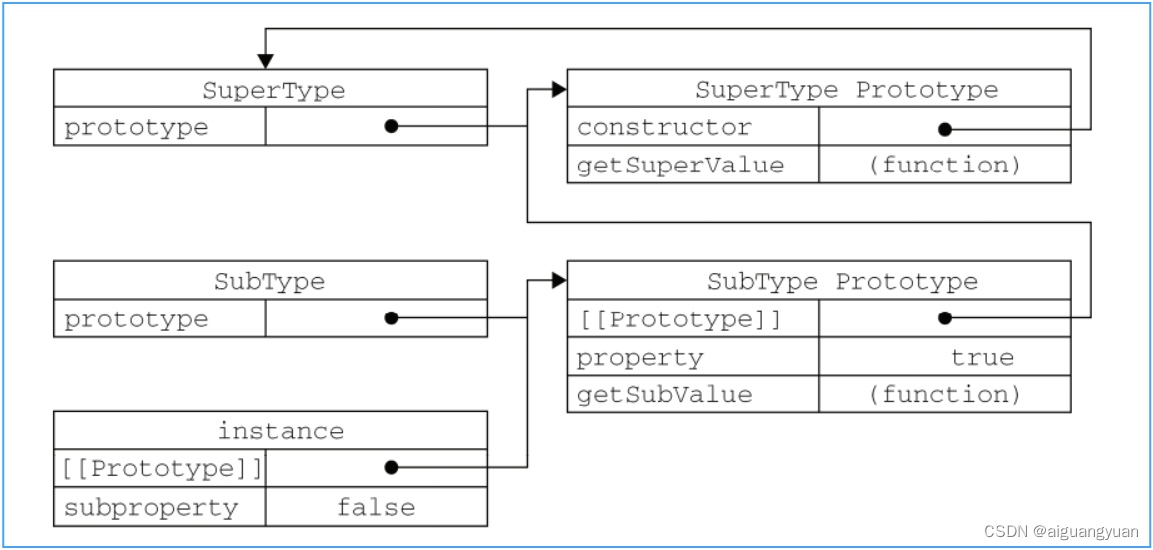

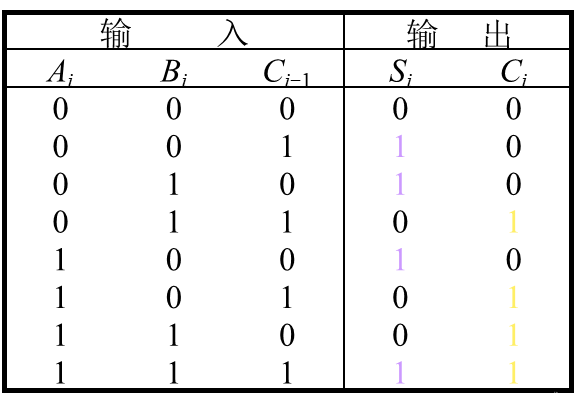
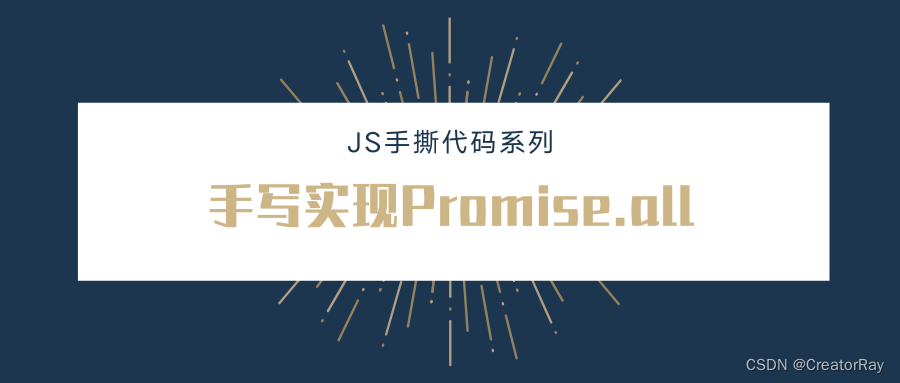


![[架构之路-158]-《软考-系统分析师》-13-系统设计 - 高内聚低耦合详解、图解以及技术手段](https://img-blog.csdnimg.cn/img_convert/1b5eb161416b6c7a9e0917256b5f6f17.png)

